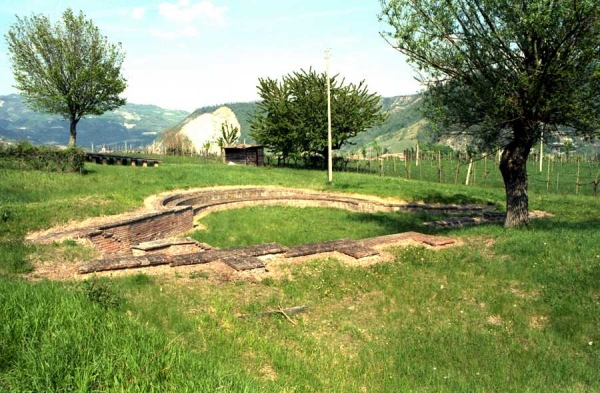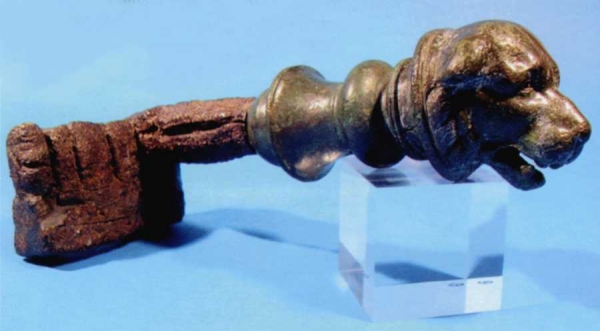The prehistorical and protohistorical rests of Galeata are few and fragmentary. We have tracks from the eneolithic period (2400-1800 B.C.). During the Iron Age the territory of Galeata was interested by the movement of Italics people, in particular of the Umbri, which took place in Romagna between the VI and IV century B.C. Some rests are kept in the Mambrini museum in Galeata
The Romans subdued the territory of Galeata after the 266 B.C., when Sarsina was subjected, in the near valley of the Savio.
Between the II and I century B.C. the inhabitants obtained the roman citizen-ship. The territory was organized as Municipality and the urbanization lead to the foundation of a great city centre meant to become the chief-town of the valley: so the city of Mevaniola, south-westwards Galeata, near Pianetto, was born and was so called by the immigrants coming from the Umbria - Mevania ( Mevaniola was the little Mevania).

The theatre dated to the beginning of the I century B.C.
The most ancient inscription coming from the city of Mavaniola, is the central part of a floor mosaic which has been found during the excavations of the thermae. The inscription in black tessera on white background, recalls a series of public works. The so called "Di Cesio's mosaic" is dated to the half of the first century B.C. It is kept in the civic museum of Galeata.
|
|
[ ]CAESIV [s f(ilius)] Galeata Civic Museum "Mons. Domenico Mambrini" |
One of the most suggestive artistic piece of the roman age
is the funeral stele of Rubria Tertulla, wife of Caio Refano Macrino. In the
lower part of the stele, an hexameter poem is written which tells the story of
the girl from Forlì and recalls in gentle tone familiar bonds' values. The
stele, now kept in the civic museum of Galeata is dated to the III century A.D.
The symbolic key of Mevaniola which has got only another example in the roman
rests in Italy, represent a very important piece. The key, coming from the
excavations of Mevaniola, weighs 1,750 Kg, it is in bronze and iron and the
handgrip represents a molossian hound's head

Iron and bronze key (first half of the I century A.D.),
Galeata Civic Museum "Mons. Domenico Mambrini"
During the fifth century A.D., the loss of the markets and
the uncertainty of the traffics lead to the abandon of the city and to a
different urban gravitation: in this way was born Galeata.
Medieval and modern history. The Galeata of today was born under the hill where
the Sant'Ellero's Abbey, set up at the end of the V century A.D., raised.
Between the end of the V century and the beginning of the VI the arrival of the
Goth king Teodorico took place; he come to the valley in order to make the
Traiano's aqueduct restored. One mile northern of Galeata, there was the
Teodorico's villa, built above the rests of a roman villa.
The encounter between the Goth king and Sant'Ellero took place around the 502.
It finished with the victory of the saint to whom was allowed to increase and
consolidate the temporal power of the abbacy. During the Byzantine age the
territory of Galeata was near the limits of the province of the "Alpi-Appennine",
which the Byzantines wanted as a barrage of the Tuscan ways to the longobard
Tuscany.
During all the high-middle age Galeata is very important for the presence of the
Sant'Ellero Abbey, one of the first west monastic communities; When the saint
died his followers kept on his work and the abbey become the most important
civil and religious community of the valley. In 755, Pope Stefano II stayed here
during the trip in which he asked help to the king Pipino against the Longobard.
On October 1288 Nicolò V gave the monastery to the church of Ravenna
The " burgus Galliatae" in 1424 is one of the signoury of Florence, constituting
part of the Granducato di Toscana up to 1859. Galeata is contended by Medici and
Visconti during the battles to control Romagna, but its most tragic moment is in
1527, during the crossing towards the "Rome' sack" of the "Lanzichenecchi" that
destroyed the country
